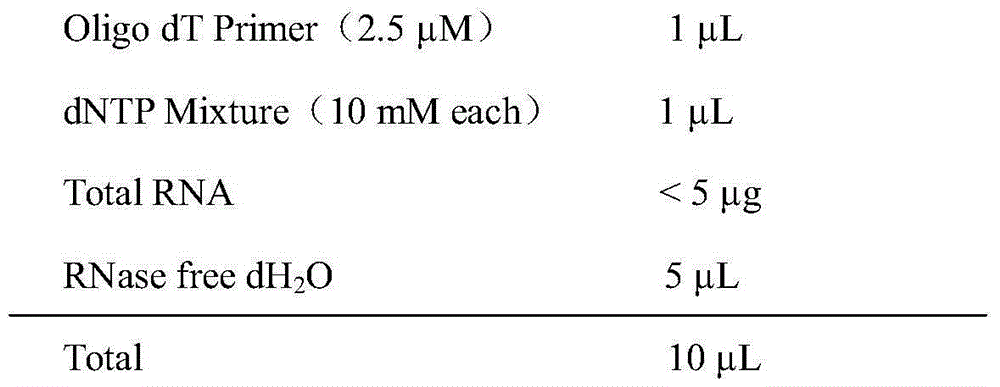AFP nanometer antibody A18 based on AFP antigen
A nano-antibody and antigen technology, applied in the biological field, can solve the problems of expensive antibody and antigen standard products, and achieve the effects of small molecular weight, cost saving and unique structure
- Summary
- Abstract
- Description
- Claims
- Application Information
AI Technical Summary
Problems solved by technology
Method used
Image
Examples
Embodiment 1
[0022] Example 1. Construction of camel-derived immune single domain heavy chain antibody library
[0023] 1) Immunity of alpacas:
[0024] A healthy adult alpaca was selected and immunized by intradermal and subcutaneous multi-point injections on the back. For the first immunization, Freund's complete adjuvant was used, and the dose of immunogen was 1 mg; on the 28th day, the second immunization was performed with Freund's incomplete adjuvant. The dose of immunogen is 0.5 mg, three immunizations on the 49th day, Freund's incomplete adjuvant, the immunogen dose is 0.25 mg; on the 70th day, four immunizations, Freund's incomplete adjuvant, the immunogen dose is 0.25 mg. On the seventh day after the third booster immunization, the peripheral blood of the alpaca was collected for the construction of a phage display library.
[0025] 2) Separation of camel-derived white blood cells: add lymphocyte separation solution to the centrifuge tube, then add blood samples, centrifuge at 7...
Embodiment 2
[0049] Example 2. Affinity panning and identification of AFP Nanobodies
[0050] 1) Affinity panning of AFP Nanobody: In the first round of panning, the anti-AFP antigen was diluted with PBS (pH 7.4), coated with a microtiter plate at a final concentration of 100 μg / mL, and kept at 37° C. for 2 hours. After washing 4 times with PBST (10 mMPBS, 0.5% Tween-20 (v / v)), 300 μL of 3% OVA-PBS was added to block for 1 hour at 37°C. After 1 hour, the blocking solution was discarded, washed 10 times with PBST, and 100 μL camel-derived immune single-domain heavy chain antibody library (titer about 1.0×10 11 cfu), incubated at 37°C for 1 hour. Aspirate unbound phage, wash with PBST 10 times, add 100 μL of Glycine-HCl (0.2M, pH 2.2) to elute for 8-10 min, and immediately neutralize with 15 μL of Tris-HCl (1M, pH 9.1). Take 10 μL of the eluted phage to determine the titer, and the rest is used to infect 20 mL of E.coliTG1 strain grown to the logarithmic phase for amplification. The ampli...
Embodiment 3
[0061] Example 3. The sequencing of the gene encoding the AFP Nanobody and the determination of its amino acid sequence
[0062] The positive phage clones identified by double-antibody sandwich ELISA were subjected to DNA sequencing, and the amino acid sequence could be obtained according to the DNA sequencing results and the codon table.
PUM
 Login to View More
Login to View More Abstract
Description
Claims
Application Information
 Login to View More
Login to View More - R&D
- Intellectual Property
- Life Sciences
- Materials
- Tech Scout
- Unparalleled Data Quality
- Higher Quality Content
- 60% Fewer Hallucinations
Browse by: Latest US Patents, China's latest patents, Technical Efficacy Thesaurus, Application Domain, Technology Topic, Popular Technical Reports.
© 2025 PatSnap. All rights reserved.Legal|Privacy policy|Modern Slavery Act Transparency Statement|Sitemap|About US| Contact US: help@patsnap.com



